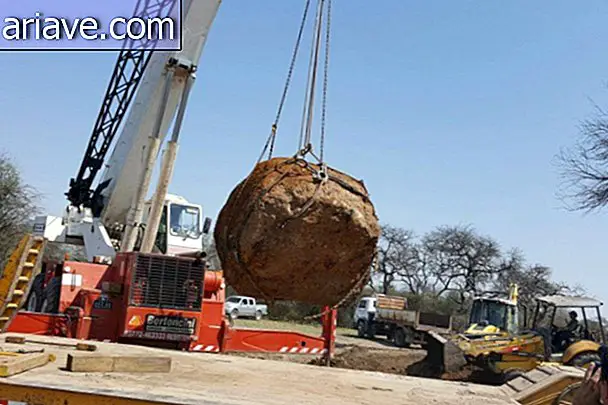After all, how does the carbon-14 dating process work?
Surely you have read or heard something in which scientists say such an object was thousands of years ago. But have you ever wondered how they come to this conclusion? The simplest answer to this is radiocarbon dating, ie through carbon-14.
Everything that ever lived or was produced by any living being can go through this process of unraveling which period of history it belonged to. Its accuracy is almost absolute, so scientists use it to this day, even though it was discovered in the 1940s.
Understand, first, the carbon atom
Carbon is a chemical element present in all living matter. It divides into three different isotopes: carbon-12, or C-12, which is the most abundant of all (approximately 99% of all Earth's carbon fits here); carbon-13, or C-13, which corresponds to 1% of the total; and the rarest of all, carbon-14, or C-14, with only 0.001% of all carbon on the planet.
Since every living being has carbon atoms, they exist in their composition with the same equilibrium as on Earth. 0.001% of the carbons in your own body belongs to the C-14 isotope. It turns out, though, that he's radioactive! It tends to emit a Beta particle until it turns to nitrogen.
Hi? Does carbon become nitrogen? Exactly! It all starts in space: when the cosmic rays reach our planet from the Sun or even from the ends of the universe, they collide with various atoms they find along the way and thus "pull" neutrons from their nuclei. These "lost" neutrons will interact with the nitrogen atoms, which is the most abundant element of our atmosphere, creating who? The carbon-14!

The measurement
In fact, the above reaction also releases hydrogen atoms, but what matters is the C-14. It will interact with oxygen, creating a carbon dioxide with carbon-14. After that it will be absorbed by plants and later by animals and man. This is why we have in our body the same proportion of C-14 as the Earth or other living beings.
OK, and where do you want to go with this? Well, after a living being dies, the C-14 in its body tends to become a nitrogen atom again. But this process is quite slow. It was then that the scientist Wilard Libby came up with the idea of measuring the amount of radiation emitted by the C-14 of some object. Through this we can know exactly how long that being has stopped breathing. Complex, huh? It may seem so, but the method is extremely effective in historical dating.
The radiation measurement is made by an instrument called Geiger-Müller Counter. With this extremely sensitive device, it is possible to measure the radiation of the atmosphere. Thus, by isolating the archaeological artifact whose historical period we want to discover, it is possible to measure only the radiation of carbon-14.

Period that can be measured
However, you cannot measure dates as long as we imagine. C-14 testing is only reliable for dating at most 50, 000 years. This is because the radioactivity of carbon-14 is very small and halves every 5, 730 years, also called the “C-14 half-life”. Thus, researchers have come to the conclusion that the method is only effective for a maximum of 10 C-14 half-lives in this type of dating - for older objects, another dating medium is required.
The discovery of this dating method through radioactivity gave Wilard Libby the Nobel Prize in Chemistry in 1960! He passed away in 1980 at age 71 - but he was certainly one of the greatest geniuses of the last century.

***
So, readers, can you understand how radiocarbon dating works? Did you imagine that chemical formulas could be so interesting? If you have any suggestions, don't be shy about using the comment field below to make your considerations.
* Posted on 10/08/2015











